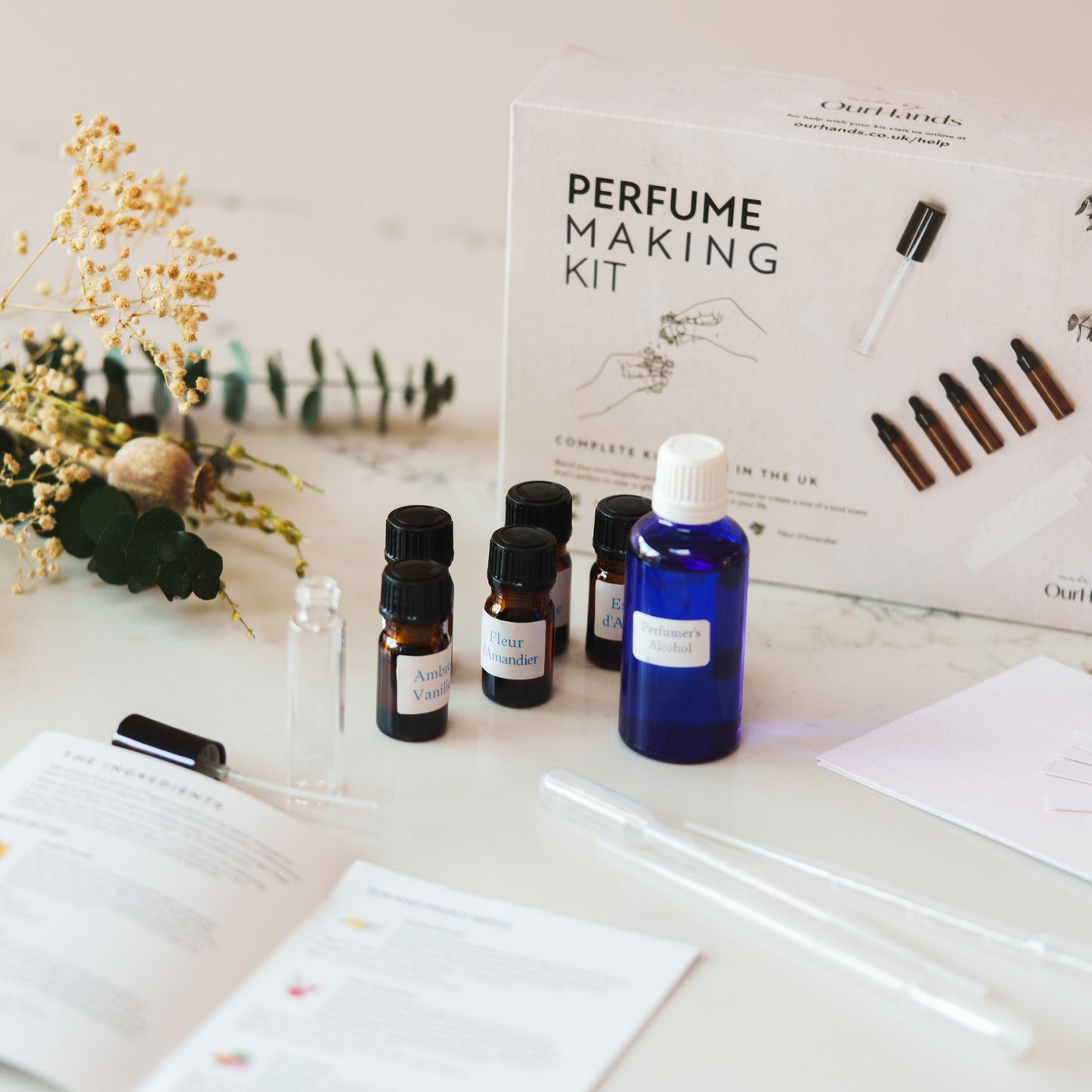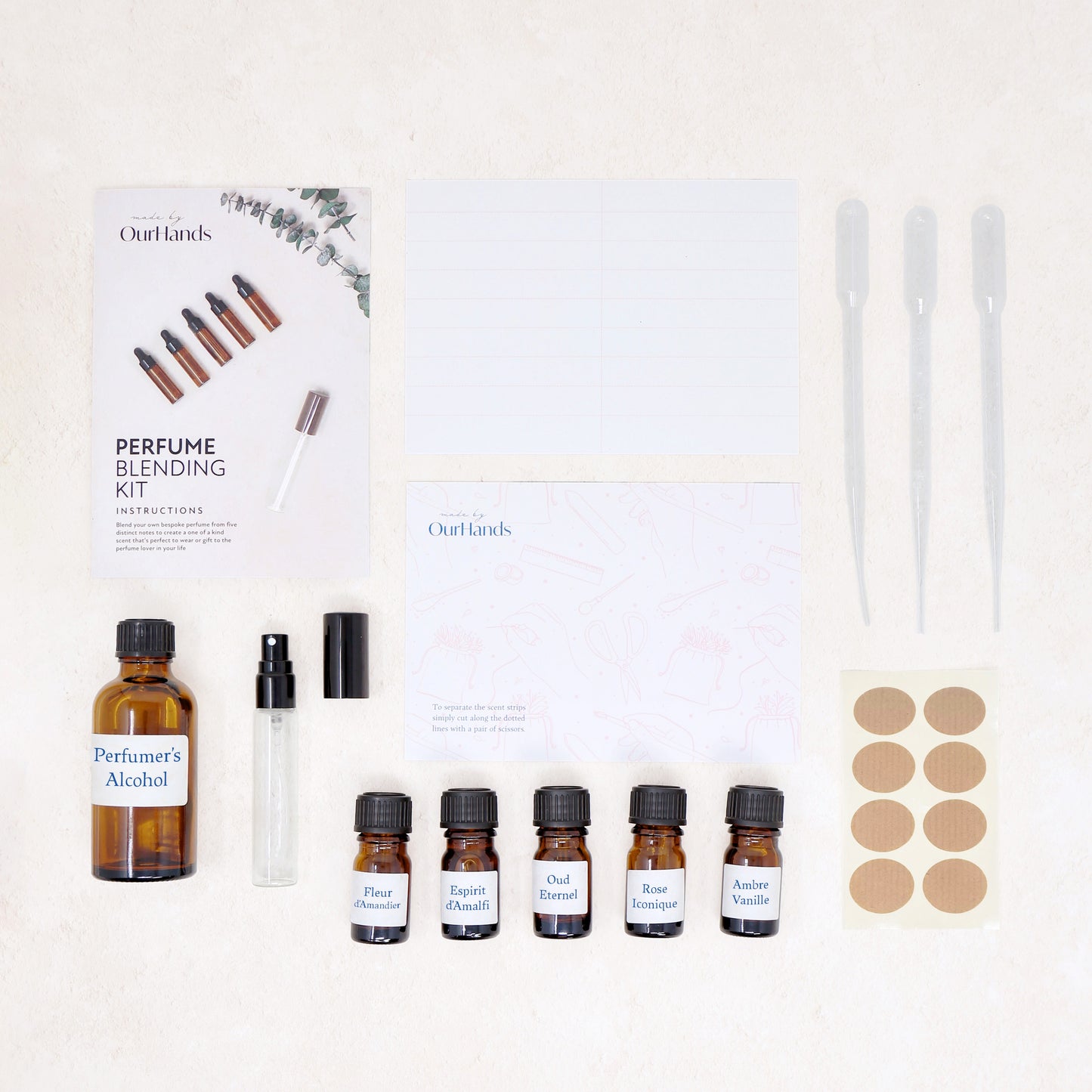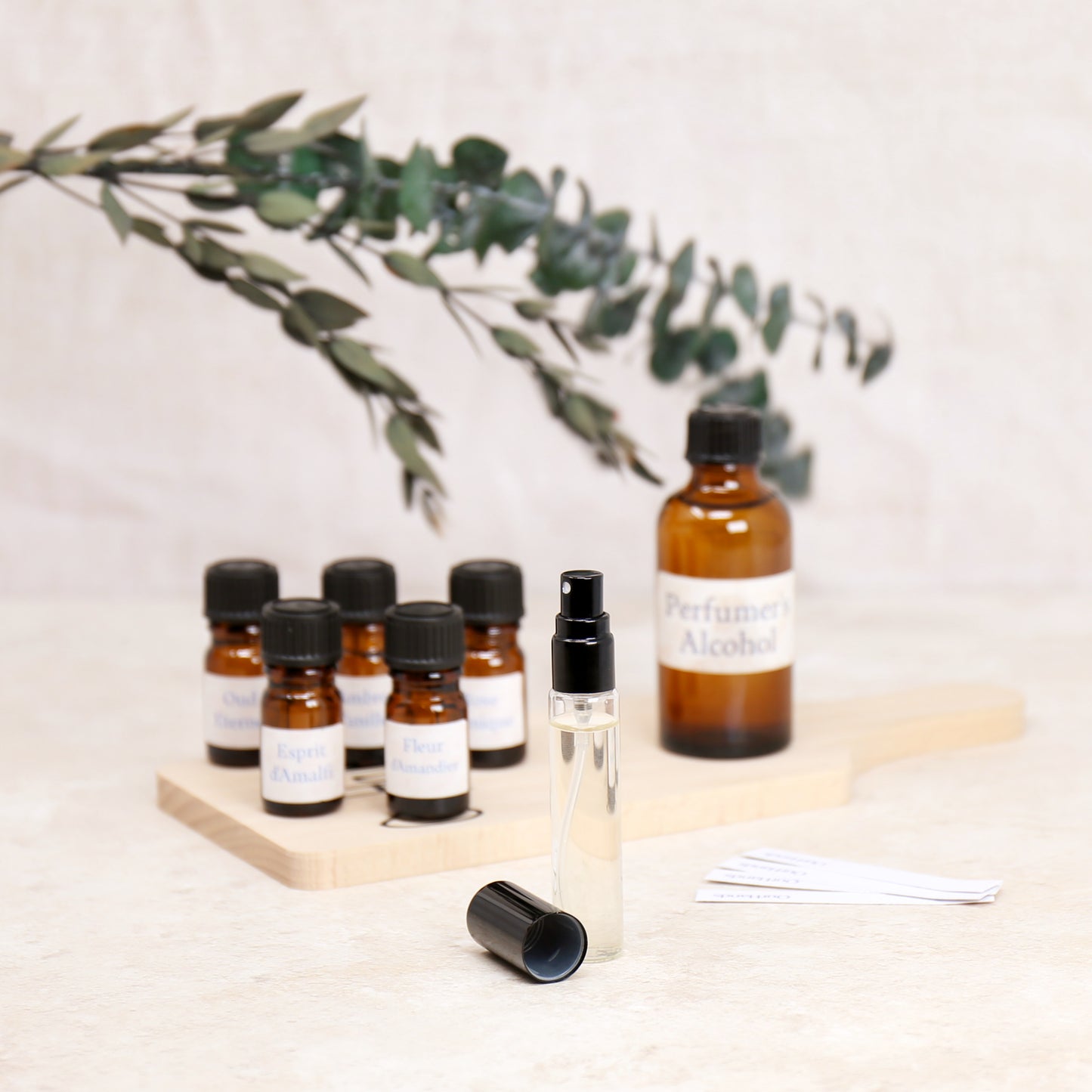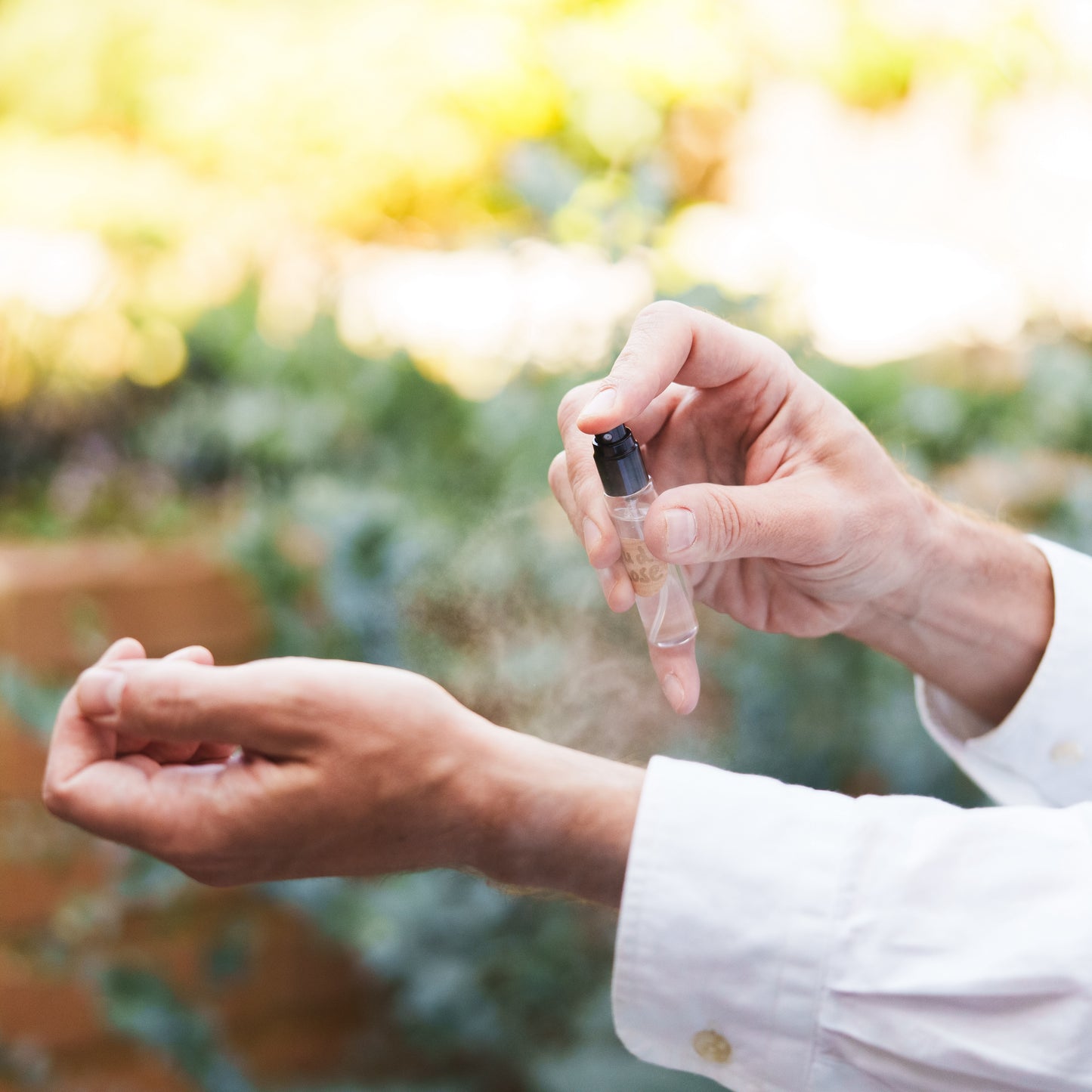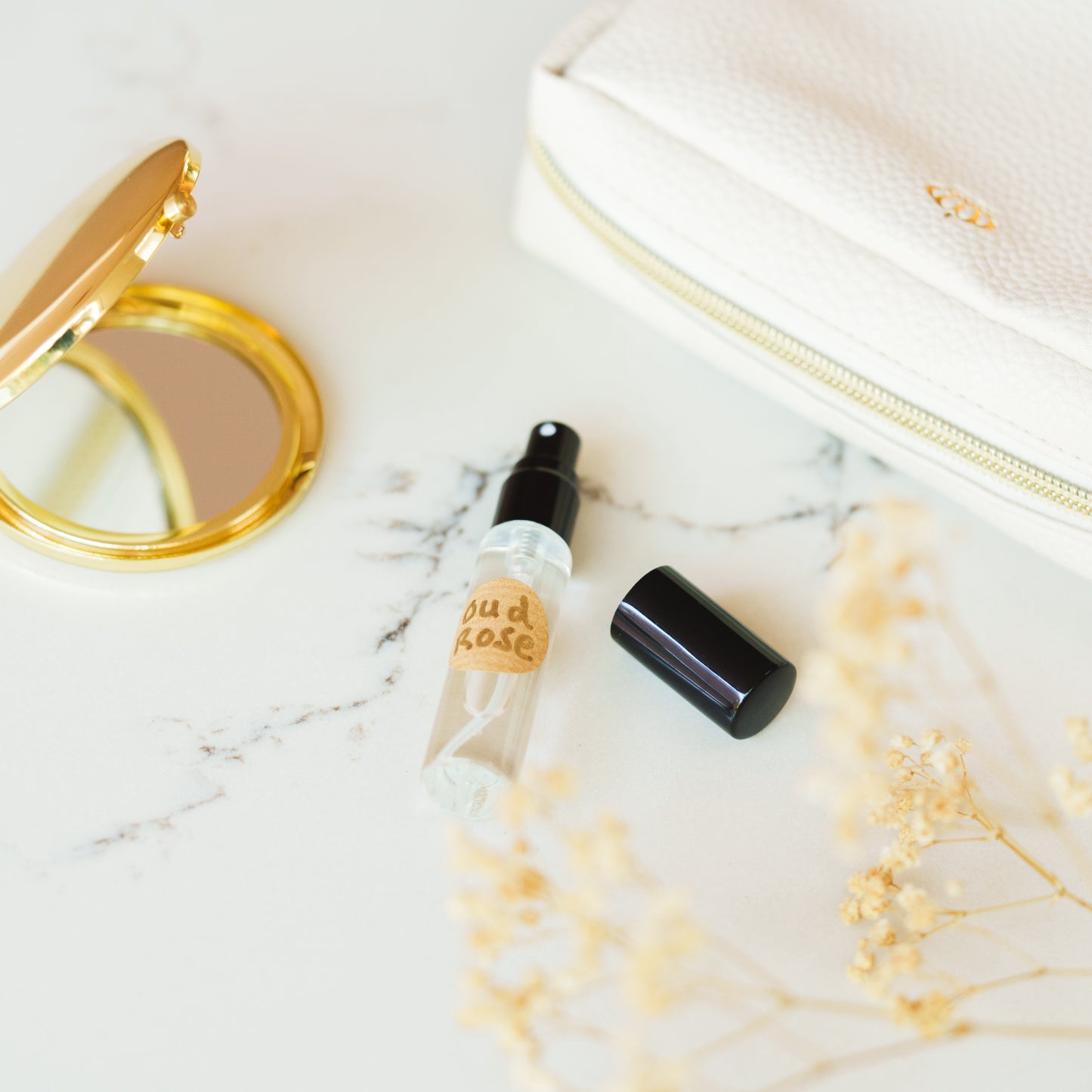Perfume Making 102 - Basics of Perfume Making
Hello, and welcome back to our perfume-making series! The first article took a look at signature scents, what they are and how to find them. This post will take a look at the basics of perfume-making by explaining common terms and concepts.
If your imagination has ever been captured by the beautiful aroma of a fragrance, you’ll know how fascinating the world of perfumery can be. The right scent at the right time can take you right back to your childhood bedroom, or make you feel an emotion you had not felt in years. The power of a well-chosen fragrance is unmatched.
While we always encourage ignoring rules in favour of being creative, perfume blending is an art form that requires a delicate balance. It is quite helpful to know a little bit about fragrance families and notes before you get started. Don’t worry if it all seems too complicated to follow! Our Perfume Blending Kit contains everything you need to get started, so you can experiment until you get it right!
Perfume Making Vocabulary
Perfume is made by blending scents, or ‘notes’ together. Seems simple enough, right? But with millions of different scents to keep track of and combine, it can be difficult to work out how to build your perfume in the best way. Luckily, experts have figured out general categories of scents, as well as a way to anticipate how they will interact in the finished product. Let’s dive in!
Understanding Perfume Notes
Fragrance notes are the building blocks of perfume. They are composed of three broad categories that stack on top of each other to create the life evolution of the perfume. That’s right, perfumes evolve throughout the day! That’s why it’s so important to always test a perfume for a few hours before you buy it: the lighter notes will evaporate, revealing the middle notes and, finally, the deeper notes beneath. Are you intrigued yet? Let’s dive in!
- Top notes are usually the first ones you smell in a perfume. Light and airy, they draw you in with their freshness and give an element of candour and youthfulness. Think of citrus, fresh herbs and berries, setting the scene for the perfume to develop. The top notes are also the first ones to fade away, giving more space for the remaining notes to bloom.
- Middle notes are also known as heart notes. They are the main event of the fragrance, giving it body and soul. They form a bridge between the top and base notes, allowing the perfume to gain more depth of character. They would typically be a little stronger than the top notes, with hints of flowers, fruit or spices such as roses or cinnamon. The middle notes are where you can really start experimenting with the direction of your perfume. Warming or summery, bubbly or adventurous, different notes will tug at different emotional responses and let you paint an intricate scentscape. Middle notes will eventually evaporate over the course of the day, leaving you with strong base notes and subtle hints of the top and middle notes you started with.
- Base notes are the foundation of a fragrance. Bold and powerful, they provide richness and longevity to the perfume. They are often quite elegant, warm smells such as precious woods and resins. Using good base scents is crucial as they will be the last ones to evaporate, meaning they’ll be present throughout the entire lifetime of the fragrance.

Now that we’ve explained how different fragrances work together to create a perfume, let’s explore how we can categorise scents into families.
Recognising Fragrance Families
Most scents can be arranged into categories, which makes it easier to mix and match them in a harmonious way. Do keep in mind that these categories are largely subjective! Some might change over time, or new ones might emerge. The ‘gourmand’ family, for instance, isn’t widely recognised yet but is starting to emerge as one of the newer trends in perfume. It regroups modern, delicious scents based on food such as caramel, chocolate or coffee.
In this article, we’ll focus on more traditional families. They should be more than enough to give you a good grasp on fragrance blending! There are four main families of fragrances, which can be broken down into sub-categories.
- Floral: This family includes fragrances inspired by flowers, such as iris, jasmine and lily of the valley. They are great for spring and summer and evoke elegance and romance. This family has traditionally been seen as being quite feminine, though more and more perfumers are using it in male and gender-neutral perfumes. Floral scents can range from subtle and fruity, like orange blossoms, to heavy and sweet like rose petals. They’re often used for top notes and heart notes.
- Fresh: Fresh fragrances bring to mind a clean and vibrant feel, such as clean laundry, ocean breeze and freshly cut grass. They are often delightfully refreshing and easy to mix with other fragrances due to their versatility, which makes them perfect for all seasons. Fresh fragrances have multiple subcategories: invigorating citrus such as lemon or grapefruit, aromatic herbs like mint and lavender, green notes of moss and fougère, and exhilarating marine notes of sandy beaches and calm seas. They can be used for top and middle notes, though some marine scents could make a good base note.
- Woody: Woody scents are earthy and comforting, like walking in a deep forest after a rainstorm. Their warmth makes them ideal for the autumn and winter months. They are traditionally seen as being more masculine, but perfumers have been blurring the lines more and more in recent years. Woody subcategories range from mossy woods with sweet undertones of moss and patchouli, to dry woods with hints of cedar wood and leather. They are amazing base notes, and will also work well as heart notes.
- Amber: Previously known as ‘oriental’, these are rich and warm fragrances. Sensual and powerful, they can be worn across all seasons and are perfect for a romantic dinner or a business presentation. They can be quite woody with notes of sandalwood, soft and sweet with vanilla and musk, or warm and spicy with hints of cinnamon and pepper. They work well as base notes and heart notes.

Next steps
We hope this article has been useful and that you’re a little bit more comfortable with the vocabulary and concepts of perfume-making!
Now that you know all about fragrance families and perfume notes, you can start identifying the families and specific scents you’re drawn to. Everyone will have different preferences, and some scents can be a bit of an acquired taste.
Once you’ve narrowed down your options to just a few scents, you can start blending them together to see how they interact. In the next article, we’ll go more in-depth into how to blend your own perfume, with directions and hints & tips. If you’d like to get started with a hands-on project, our Perfume Blending Kit has everything you need to get started, including 5 different fragrance blends, a glass atomiser bottle, and step-by-step instructions.



